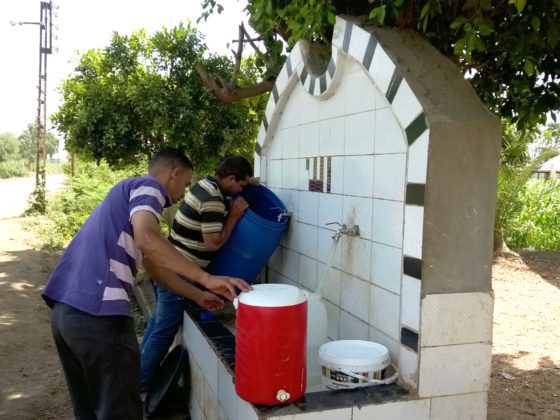The United States faces a water infrastructure crisis. While people in developed countries still have significantly better access to safe water than do people in emerging economies, the lead poisoning in Flint, Michigan, showed that the nation’s water infrastructure is in bad shape in many places. Not surprisingly, the American Society of Civil Engineers routinely gives the drinking water and wastewater infrastructure a “D” letter grade, and the Environmental Protection Agency (EPA) sees a need for hundreds of billions of dollars of water and wastewater infrastructure investment (for treatment, transmission and distribution, wastewater collection, stormwater management, etc.). How can we tackle these significant challenges? And what is the role for private companies, next to public utilities? Can they scale and help consolidate the water sector? We asked Chandler Brenneman, Darden MBA 2015 and project manager at Aqua America, the second-largest private (investor-owned) utility, who recently gave a talk at UVA (Darden).

Municipalities are the main players in the water infrastructure space. These locally owned public entities serve the vast majority of the US population and typically receive most public attention.[1] How and to what extent do private companies like Aqua America help tackle the water infrastructure crisis that the United States faces?
Aqua America is the country’s second-largest investor-owned utility, serving approximately 3 million people across eight states. EPA data suggests that there are more than 53,000 separate water utility systems in the United States serving about 85% of the population. The water sector is a highly fragmented industry, and in recent decades there has been a concerted effort to promote consolidation within the industry. In the last 20 years, Aqua America has acquired over 300 systems and expanded from its traditional operations in suburban Philadelphia to Philadelphia, New Jersey, Ohio, Indiana, Illinois, North Carolina, Virginia, and Texas. Aqua America grows primarily through acquisition, which is supplemented by organic growth that varies within each state. As mentioned earlier, with the vast majority of water systems under municipal control, there are plenty of opportunities for inorganic growth. It turns out that growth through acquisition is a good model for the consumer as well.
Aqua America has a proven track record of driving down average water main breaks per 100 miles of pipe, reducing the average by half since the year 2000 through a methodical plan of pipe replacement. Pipe replacement should happen on a continuous basis. It is much cheaper and less disruptive to preemptively replace a pipe than it is to repair the damage after a pipe bursts. The EPA estimates that over $600 billion is needed over the next 20 years to upgrade the water infrastructure in the United States. There is a great need for what Aqua America does, and our business model supports that. We also need to be good stewards of our environment. Aqua America’s core mission is protecting and providing Earth’s most essential resource.
With its direct link to public health, the water industry is a very regulated industry. How does the regulatory environment affect where you invest and what particular water utilities you acquire?
As an investor-owned utility, Aqua America answers not only to stockholders, but also to the Public Utility Commissions and the Office of Consumer Advocate in each state. A good regulatory environment allows us to earn a reasonable return on equity, which is our ability to earn revenue (typically 10%) on the capital dollars that we spend on infrastructure projects. By contrast, our operations and maintenance spending, taxes, etc., are all passthrough costs that are passed on to the ratepayer. Water rates are structured in such a way as to support and encourage continuous upgrading and improving our water infrastructure rather than just simply maintaining it. This allows us to provide best-in-class service to our consumers. Of course, our capital plans are closely scrutinized by stakeholders to ensure there is a measurable benefit to our consumers.
One of the advantages of being a large, investor-owned utility is that we benefit from economies of scale. We have expertise that we can apply to newly acquired systems to improve water quality and customer service. Our access to the debt and equity markets also helps facilitate the funding of large infrastructure projects. Moreover, the rate divisions within each state allow us to spread out the costs across our ratepayers, much like the electric and gas industry. We also operate under a general rule of thumb to find capital projects that will reduce operational expenses by at least a 7:1 ratio. The significance of this is that, on average, we can spend $7 on capital projects to save $1 of operation and maintenance expenses, and the customer does not see an impact on their bill. This ratio takes into account our capital structure (roughly 50% debt, 50% equity) and our return on equity and allows Aqua to earn a higher return without increasing the ratepayer’s bill.
One thing we have seen recently in the water industry is that a number of states are passing “fair market value” legislation. This type of legislation is significant because it allows companies like Aqua America to offer a municipality more than book value for its publicly owned water and/or wastewater system. For instance, over time it is likely that a system has components that were contributed by a real estate developer at no cost to the municipality. Without fair value legislation, it would not make sense for Aqua America to pay for something it could not earn a return on. With fair value legislation, we can offer a municipality what a system is worth and add that whole value of the acquired asset into our rate base and earn a return on it. Being able to offer a municipality what its system is worth makes the conversation around acquisitions a lot easier. It lets municipalities use the proceeds from the sale toward other important local projects and rest easy in the knowledge that we have a great track record of maintaining and upgrading water systems. We see this as a win-win for ourselves and the community.





